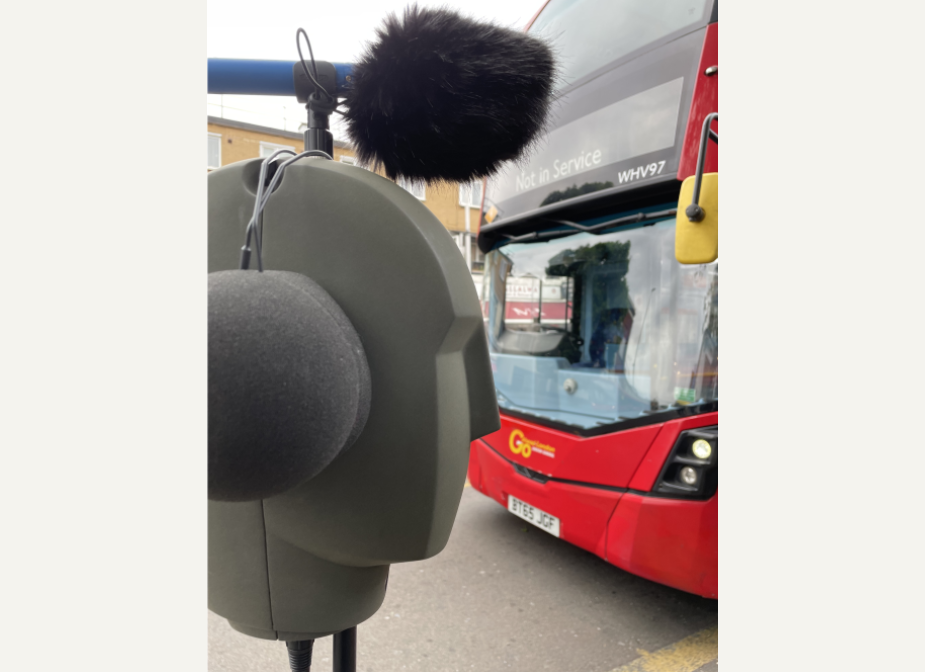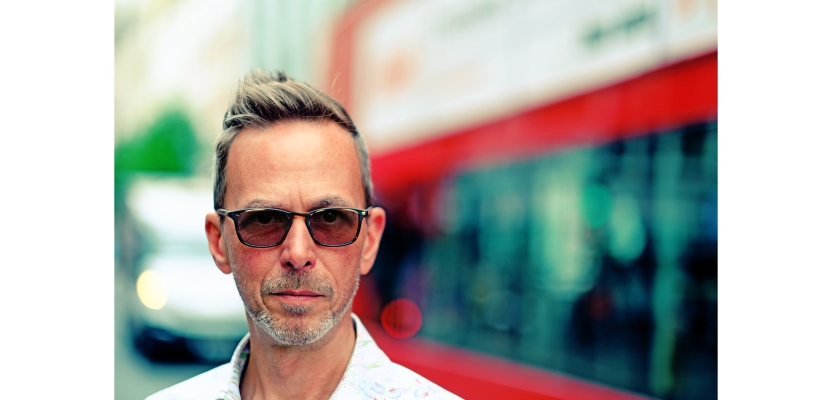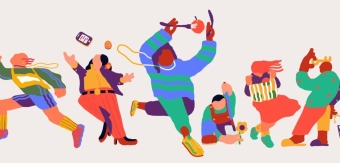Throughout my career as a sound designer, I've witnessed rapid changes in the audio landscape. As I reflect on this, I realise that there has never been a better time to work in audio.
Radio listenership is currently at an all-time high, podcasts are still experiencing rapid growth, audiobooks are becoming more immersive, commanding higher budgets, and the world of experiential audio is booming.
When I started out in audio-post, my time was divided between working on promos, TV commercials, and radio ads. However, with the rise of numerous new digital platforms, there is now more demand for high-quality audio content than ever before.
The last couple of years have served up some real treats for me, and I’ve been fortunate enough to bounce happily from one great audio led project to another. Agencies and their clients, after the purely functional advertising during lockdown, are finally making incredible and engaging content once again. Content that pushes the boundaries of audio by utilising new and emerging technology and bringing the fun back into the studio.
As a sound designer, I’ve always done a lot of radio advertising work. It’s something I passionately enjoy, it’s collaborative, fast, and I get to wear so many different hats. I love the effort that goes into squeezing everything you can out of a performance, striking out every irrelevant word, changing formal writing on a page into dialogue that feels more conversational. I love crafting a world that feels real or pure fantasy to the listener, and I love putting in the details that really lift the story from the page.
In today's digital world, dynamic radio has the power and potential to target individual listeners, which demonstrates just how tailored your ads can be, and how easy it is to speak directly to your target audience.
I'm always excited to read a new radio brief and step into the world the creative has imagined. Writing for radio is a real art, it requires making every word in the script count. A great radio copywriter specialist and friend of mine, Tim Craig, is also a regular winner of Flash Fiction Awards. If you’re not sure what flash fiction is then I highly recommend immersing yourself in stories that have the potential to fill a novel, sometimes condensed into just a single page.
Unlike other mediums, radio relies heavily on the listeners' imagination. Therefore, a concise and impactful script is crucial. It is also important to establish the location quickly and use sound design to guide the story. Foley plays a critical role in bedding characters into the environment, making them truly believable.
Many radio ads and audiobooks I hear often sound like heads floating in space. Voice booths are designed to eliminate everything but speech, so it’s essential to ground characters into reality by adding these layers and getting a performance that doesn’t feel too static. Choosing the right microphone, precise EQ, the use of immersive location sound and by understanding and modelling the correct acoustics onto a performance are difficult skills to master but reap huge rewards.
Thanks to my passion for bringing stories to life, my love of spatial sound and my interest in psycho acoustics, I’m becoming more frequently called upon to work alongside some of the worlds’ most renowned brands to create longer format audio-led content. This work often takes me away from the comfort of my studio at Jungle to work in many different locations and in the latest audio formats.
These projects have allowed me to explore new skills, from immersive room installations that transport listeners to different worlds to recording a comedy show in Dolby Atmos. Additionally, location recordings have given me the opportunity to capture real 3D sound in various places that I can also weave into the traditional TV and radio advertising work that I do.
A while ago, I was tasked with creating a 360 audio tour of The Barbican. I recorded every aspect of the building and the estates surrounding it in meticulous detail, and more recently, I was asked to capture the real sounds for a TV and radio campaign that brought to life what Londoners hear every day on TfL’s fast and vast network. I recorded the TV shoot with my trusty binaural microphone (fondly nicknamed “Bert”), and I spent a day recording everything from tube stations to trams; I even had a double decker bus complete with driver all to myself.

So now I find myself in a world where audio production and post-production intersect, and I’m no longer pulling sound effects from a library but going out into the world to produce entirely new libraries that allow me to weave elaborate stories for people to enjoy. It feels extremely rewarding and fulfilling, and there are many times I feel lucky, but then recently my mother-in-law pointed out to me that I’ve been persuading people, through blogs like this, to do these things for a very long time, and that I shouldn't really be that surprised.
What has surprised me is that out of nowhere and with a bang, 2023 has delivered radio scripts to me that are so funny, surreal and sublime that, when I am in the studio, my job satisfaction has gone through the roof. The last year started and ended with ads for British Airways – two brilliantly simple scripts and yet often the subtleties involved in creating “simple” are the hardest to achieve. I recorded a whole raft of very different demos for Tic Tac and Lemsip and I really hope they make it on air - the ideas are very funny and they crossed so many genres and perfectly demonstrate to me why radio is often the most creative platform in advertising.
Recently, I worked on a Stoptober ad that delighted and surprised me. The radio script was only subtly different from that of the TV dialogue - we could have easily just lifted the lines and the SFX from that. Yet the creatives were wise enough to know that it just doesn’t work to put a TV ad on the radio. There are a multitude of reasons why not, but on this occasion a different delivery was necessary for radio. I used various mic locations for the recording, and alongside the creative, directed the talent to sound as natural as her dialogue was for the TV, but in a more personal, direct and upbeat way for radio.
It’s been a fun and rewarding time for me, but broadening your horizons brings with it new challenges. Like how to make a non-linear immersive sound installation transition seamlessly, at any time, to any other scene at the touch of a wall (yes wall) and still sound great. Or how to remove a heckler and his empty rolling wine bottle from a comedy gig without anyone noticing. Or creating the sound of a crane that was used to build Nubian pyramids in Sudan over two thousand years ago. And in the more traditional world of radio, directing voice talent to sonically demonstrate various types of common colds. And morphing the sound of a helicopters' rotor blades into the sound of someone flicking through a catalogue.
Audio has always had the power to transport us to new and exciting worlds. So, whether it's traditional radio advertising or the emerging immersive experiences now available to us, I beg you to keep on writing stories worthy of radio and beyond - and embrace the creative technologies that sound designers have in their toolbox to leverage the imaginations of the listeners in a way that simply isn’t possible with any other format.




